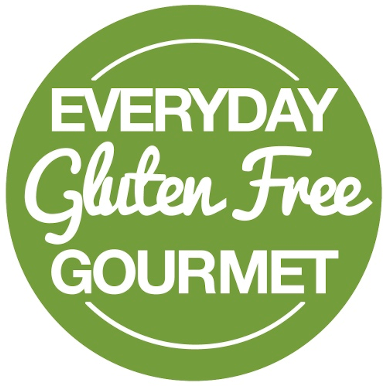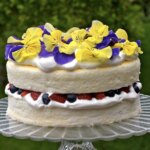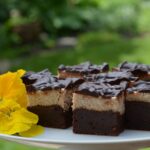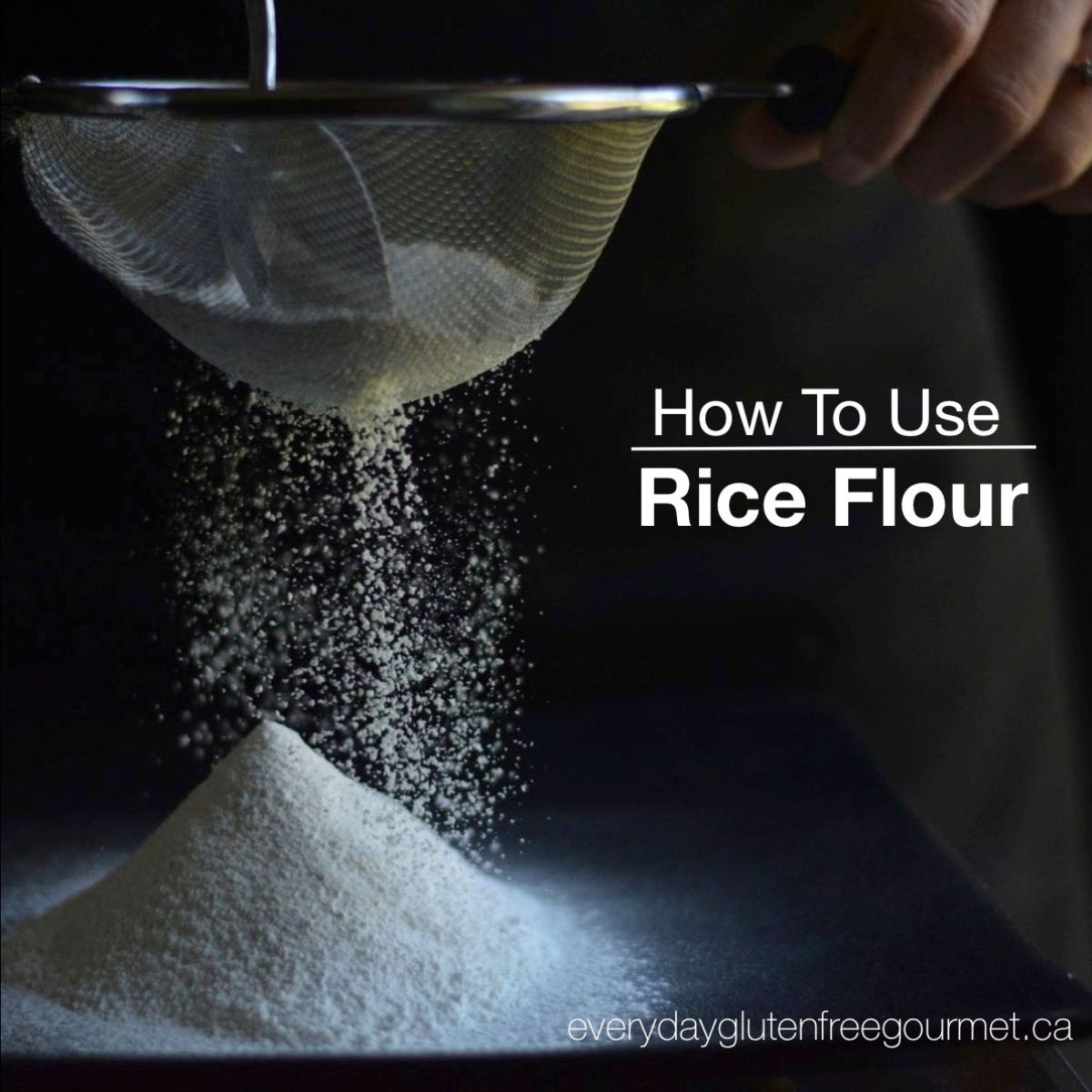How to use rice flour in gluten free baking is one of the first challenges for everyone new to the gluten free diet. In the past I never wondered why or how wheat flour worked. I could make everything I wanted to with all-purpose wheat flour. The first day you look for gluten free recipes you see there are dozens of flours, starches, binders, blends, words you've never heard of and OMG, it's overwhelming!
After a few years I needed to figure out why I had so many flours in my cupboard, what I made with them and did I really need them. After learning the basics about 21 different ingredients I wrote this How To series. In 12 posts I cover the properties and best uses of 21 ingredients. Listen on YouTube, read them all or join my bimonthly virtual cooking class on flour.
Jump to:
- The Myth of All Purpose Gluten Free Flour
- The Purpose of Flour in Cooking and Baking
- Getting Started with Rice Flour: White, Brown and Sweet Rice Flour
- Rice Flour in Gluten Free Flour Blends
- Stocking A Gluten Free Pantry
- Success with Rice Flour
- How To Buy Finely Ground Rice Flour
- 29 Tips for Cooking with Gluten Free Flour
- Resources for Gluten Free Cooks
- How To Use Rice Flour on YouTube
- White Rice Flour
- Brown Rice Flour
- Sweet Rice Flour (Glutinous Rice Flour)
- FAQs
- Expert Advice for Baking at Home
- Recipes Using One or More Types of Rice Flour
- How To Use Gluten Free Flour: A 12-Part Series
The Myth of All Purpose Gluten Free Flour
You might think (or hope) that you can simply buy a gluten free flour blend to replace wheat flour and bake all your old recipes. This is simply not true. The so called "all purpose flour blends" will work in many recipes, but they will never work in ALL recipes. Plus, they will work in some recipes but the results will be suboptimal.
Here's a quote that can help you come back and keep coming back to bake again.
The more you know, the more you realize you don't know.
Aristotle
The Purpose of Flour in Cooking and Baking
All flour contains protein, starch and fat. Who knew!
Wheat flour is typically used for three purposes:
- to thicken sauces, gravies, soups and stews,
- coat meats and vegetables,
- create structure in baked goods.
These three processes rely on the different properties of wheat flour and they're not all the same. With gluten free flours we want to use the ones that best mimic the property of wheat flour in each specific recipe.
The good news is that there is always more than one flour blend to do this. If you're already comparing blends the resource in this post will help you, 11 Gluten Free Flour Recipes. It's printable!
Getting Started with Rice Flour: White, Brown and Sweet Rice Flour
White rice, brown rice and sweet rice flour are all commonly used in gluten free baking. These flours are made from rice. Like white rice and brown rice (sweet rice, black rice and more), each flour is a little different.
I'll cover the properties and best uses of these three rice flours in a minute. First, I'll start with some general information about rice flours.
Rice Flour in Gluten Free Flour Blends
The majority of store bought flour blends, and packaged gluten free foods, contain rice flour. It's almost always used in combination with other flours and starches, that's why it's called a blend.
When you're new to gluten free the choice of flours and blends is overwhelming. Give yourself some grace and adopt a learning mindset. I share tips in my recipe card, the recipe description, on social media, in videos and everywhere I go.
I have other post specifically about flour blends. Here I'm simply suggesting you notice what individual flours and starches are included in the blends you're cooking with and the foods you're eating. That's a great start.
Stocking A Gluten Free Pantry
It took me a long time to figure out what flours to buy and how much. I still remember the first 2 kilogram bag of white rice flour I bought. I'm sure it took me two years to figure out I didn't use it very often and I don't really like it. In recipes with too much white rice flour (more than 40%) I have a weird mouthfeel and the food tastes gluten free.
After my year of going through my pantry and learning about each ingredient I started to create resources to help everyday home cooks (that's you), learn more quickly than I did. Type the single word 'flour' into the Search bar and you'll see them all!
Success with Rice Flour
When I discovered what I now call my EGFG gluten free flour blend, it took my baking to the next level. Instead of being 'good for gluten free' and going stale quickly people started asking, "is this really gluten free?"
Although I avoid recipes with too much white rice flour, it makes the best melt-in-your-mouth sugar cookies! I'm not looking to replace that recipe.
How To Buy Finely Ground Rice Flour
The milling process affects the texture of every flour and it varies by brand. Finely milled rice flours are preferred for gluten free baking.
I can't tell the difference in texture by the feel of the flour but through research I learned that Asian brands are known for their fine grind. They're readily available at Asian grocery stores and that's where I buy Erawan brand white and sweet rice flour.
America’s Test Kitchen recommends Bob's Red Mill white and brown rice flours. I find them to work well and be readily available to me.
29 Tips for Cooking with Gluten Free Flour
I created this resource called 29 Tips For Cooking with Gluten Free Flour. It's just the tip of the iceberg for gluten free cooks but it’s what I wish I knew when I started on my gluten free journey. If you haven't got it yet, download it here.
Resources for Gluten Free Cooks
There's an endless number of free and paid resources for gluten free cooks. I own two of the three gluten free cookbooks published by America's Test Kitchen (ATK) and I highly recommend them.
There's a lifetime of learning about gluten free baking and cooking right here. They explain why each recipe works so you can apply these principles to all of your recipes.
- In this book by ATK, How Can It Be Gluten Free Cookbook, their all purpose gluten free flour blend includes both white and brown rice flour. This book is out of print but there are plenty of copies floating around in public libraries, Little Free Libraries, second hand book stores and in local Facebook groups.
- How Can It Be Gluten Free Cookbook Volume 2: In their second gluten free cookbook ATK created two more flour blends proving that no single gluten free flour (or blend) can do all things wheat flour does.
- In 2020 they published a compilation of the two; How Can It Be Gluten Free Collection; 350 Groundbreaking Recipes For All Your Favourites.
How To Use Rice Flour on YouTube
If you visit YouTube (like 1000 times a day) check out my video on this topic. While you're there please give me a thumbs up and subscribe so YouTube will share my content to help more people. Thank you in advance. ❤️
Finally, the properties and best uses for each of the three rice flours.
White Rice Flour
Properties
- Neutral flavour and smooth texture
- Affordable and easy to find
- Long shelf life
Cons
- Not ideal in recipes with low liquid and high fat content like cookies and muffins.
- Gives baked goods with an unappealing, translucent-white colour if used alone.
- Too much can leave a gritty mouthfeel in baked goods.
Best Uses
- 30-60% of a flour combination for all uses (I won't go more than 40%)
Brown Rice Flour
Properties
- Affordable and easy to find
- Mild flavour and texture
- The tan colour gives baked goods a slightly browner look
- Adds a crispness to cookies
Cons
- Some brands have an odd earthy flavour.
- High fat content means shorter shelf life so is best stored in the fridge or freezer (or just bake often and it won't be a problem).
Best Uses
- Cookies
- 30-60% of a flour combination for all uses
Sweet Rice Flour (Glutinous Rice Flour)
Properties
- Combines more readily with fat than other rice flours
- Freeze and thaw stable
- Its’ natural elasticity makes it ideal for noodles and wraps
Cons
- Name is confusing since this flour is not sweet and does not contain gluten. It is made from a sweet variety of rice and it is sometimes called sticky rice.
- When I purchase this flour at the Asian store the package doesn't even say sweet rice flour. It is labeled glutinous rice flour.
Best Uses
- As a thickener for soups and sauces
- Up to 40% of a flour combination for all uses
- To make rice noodles and wrappers (the kind I buy, but someone out there makes them).
FAQs
You're not alone. Not everyone can tolerate rice and some of you want to minimize the amount of rice products you consume. At the bottom of this post you'll see links to all the flours in this 12-part series. You can definitely find a flour blend without rice flour and you can find recipes with other flours. This naturally decreases the amount of rice flour you consume.
Expert Advice for Baking at Home
Like me, Porch believes that baking at home can be fun, fosters creativity and creates memorable moments with family and friends. In this article they asked me to answer the question, How to overcome the most common challenges of gluten free baking? Shout out to them for including gluten free in this comprehensive post, Ask the Pros: Expert Advice for Baking at Home.
In this post I shared 3 tips to get started cooking gluten free and 3 tips for getting more organized. Check it out if that's what you need.
Recipes Using One or More Types of Rice Flour
Now you know why so many recipes use rice flour. For most of my baking I use this blend that I've come to call, EGFG gluten free flour blend. This 4-ingredient blend contains sweet rice flour.
In the tables below you can see the range of recipes I make using this blend. Notice the variety of recipes that can be successfully made with a blend.
Most gluten free bakers would be happy to have a versatile blend like this. Finding one that suits your taste and works in the recipes you like to bake is a goal to work toward. To speed up your learning join my bimonthly virtual cooking class, Understanding How To Use Gluten Free Flour.
Table 1.
| Recipes made with EGFG flour blend (with sweet rice flour) | ||
|---|---|---|
| Pancake Bake | Flaky Pie Pastry | Churros |
| Waffles | Tart Pastry | Corn Dogs |
| Crepes | Quiche | Cinnamon Rolls |
| Crepe Cake | Granola Bars | Some Cookies (see roundup) |
| Some Muffins (see roundup) | Some Brownies | Strawberry Shortcake |
| Zucchini Fritters | Yorkshire Pudding | Sticky Date Pudding |
| Coffee Cake | Fruit Crisp | Edible Cookie Dough |
| Cheese Biscuits | Mug Cakes | Chinese Onion Bread |
Table 2.
This table shows the different rice flours in several recipes, listed separately.
| Recipe with individual flours | White Rice Flour | Brown Rice Flour | Sweet Rice Flour |
|---|---|---|---|
| Buttermilk Biscuits | x | x | |
| Soft Dinner Rolls | x | x | x |
| Vegan Bagels | x | ||
| Crusty Bread | x | ||
| Australian Lamingtons | x | x | |
| Angel Food Cake | x | x | |
| Whipped Shortbread | x | ||
| Sugar Cookies | x | ||
| Old Fashioned Sugar Cookies | x | ||
| Cookie Flour Blend* | x | ||
| Toffee Squares | x |
*Cookies with this blend are Iced Pumpkin Cookies, Snickerdoodles, Gingerbread, Thumbprints and Cappuccino Cookies
I continue to learn and add more recipes using a variety of gluten free flours.
Keep learning and keep baking!
__________________________________________________________________________
New here? I've got help to get you from overwhelmed and frustrated to confidently cooking gluten free food the whole family wants to eat. Subscribe and get your free resource, 29 Tips for GF flour.
🎉 I made it into the Top 100 Gluten Free Blogs for 2025 and the Top 40 Gourmet Food Blogs. To learn all the ways I can help you click here, Everyday Gluten Free Gourmet.
_________________________________________________________________________

Learn the best uses for many different gluten free flours to improve your coking! This ebook gives you the essential tips for more than 20 flours with recipe suggestions for each one. It's all in one place with no ads. This is an ebook you'll actually open.
How To Use Gluten Free Flour: A 12-Part Series
This series is intended to provide a basic overview of ingredients for everyday home cooks, both new and experienced.





















Blanka Luedtke
My husband just was diagnosed with Alpha-gal, so I will have to change our eating habits quite a bit.
I need all the help I can get, and am thankful I found your website.
Thank you
Blanka
Cinde Little
Hi Blanka! All I know about Alpha-gal is to avoid red meat. As you learn more please let me know and I'm happy to help you learn to cook in a new way.
Randy J White
I can't find any info confirming that Erawan rice flour is gluten free.
I've had problems before when the label doesn't specifically state such.
Cinde Little
Hi Randy! You're right, Erawan flours are not certified gluten free. This is the ongoing challenge for consumers to know when we can trust a product to be safe. As a general rule I try to go to their website and see if the company posts allergy or gluten free information. That gives me a sense of their allergy awareness. I would also check a forum like celiac.com and today I found this, Forum topic Erawan flours. I find these discussions helpful but in the end, I don't know how someone determined that Erawan rice flour is less than 3 ppm. Years ago I also researched labeling laws and allergy standards in several Asian countries. I was happy to learn about their standards and satisfied with the products I buy. I remind myself that food manufacturers do have a responsibility to provide safe uncontaminated food and there is a system for food recalls. I understand flour is the biggest concern because it's air borne so doing your own research to satisfy yourself is the best you can do. I hope you found some of this helpful.
Jacqueline
Hi. I am not celiac but would like to bake for my gluten free friends. 🙂. I am truly confused!!! Can you replace wheat flour with gluten free flour straight up? Or is there something that needs to be added to help things bind?
Cinde Little
Oh Jacqueline, that is so kind of you. There is a lot to learn about using gluten free flour but more importantly about avoiding cross contact. Wheat is on most surfaces in every kitchen and you can read more in this post, How To Cook A Meal For A Celiac - https://everydayglutenfreegourmet.ca/2021/05/28/how-to-cook-a-meal-for-a-celiac/. There are long-term health consequences so you need to understand this before you can bake for them.
The answer to your question isn’t simple. Sometimes you can replace wheat flour with a gluten free flour blend. Depending on the recipe you may or may not need a binder. All blends are different combinations of flours and starches, a binder may be in the blend or may be needed depending on what you’re baking.
I've got 3 suggestions for you; 1) Start with recipes that don't use flour like this Quinoa Chocolate Cake - https://www.everydayglutenfreegourmet.ca/fw-recipe-slug/quinoa-chocolate-cake/, 2) Plan a night to cook together with your friends so you can learn what they need you to know to make something safe for them to eat, and 3) Once you've got that figured out consider taking a VIRTUAL private cooking class with your group to cook something you're all excited about. You can do this together in one kitchen or all in your own kitchens. Learn more about that here - https://everydayglutenfreegourmet.ca/cooking-classes/diy-create-your-own-class/.
I hope that helps and I'd love to hear how it goes.
Jacqueline
Thank you for the information. My friend is not Celiac but gluten sensitive so her diet is not as sensitive to cross contamination per say.🙂. I am someone who loves to bake and that is what I am interested in learning who to do first. Then meals at some point! My friend also cannot eat chocolate or yellow cheese as it gives her migraines. So the chocolate cake I cannot bake for her.
Cinde Little
That's great Jacqueline! So you can bake many things with a gluten free flour blend and your friend probably has a favourite blend she can recommend. The results will vary so I recommend starting with a recipe that's written for gluten free. These recipes probably have had adjustments to the liquid and fat to make up for the different properties of gluten free flours. Some bloggers only have recipes with blends, some only have recipes with individually measured flours/starches and some have both. I have both. Most recipes will require a binder like xanthan gum to help create the structure needed in baked goods. Have a look at a dozen recipes or so and decide which flours you want to buy. I use my 'EGFG flour blend' in these recipes: Mug Cakes, Sticky Date Pudding, Bourbon Caramel Pumpkin Tart, Crepe Cake and all my pies. Desserts where I measure separate flours are Orange Cupcakes, Fruit Pizza, Angel Food Cake and Lamingtons. Scroll through the DESSERT category under the RECIPES TAB or use the SEARCH feature in the top right corner of every page on my website. Doing it on an iPad or laptop is quicker and easier. Happy Baking!